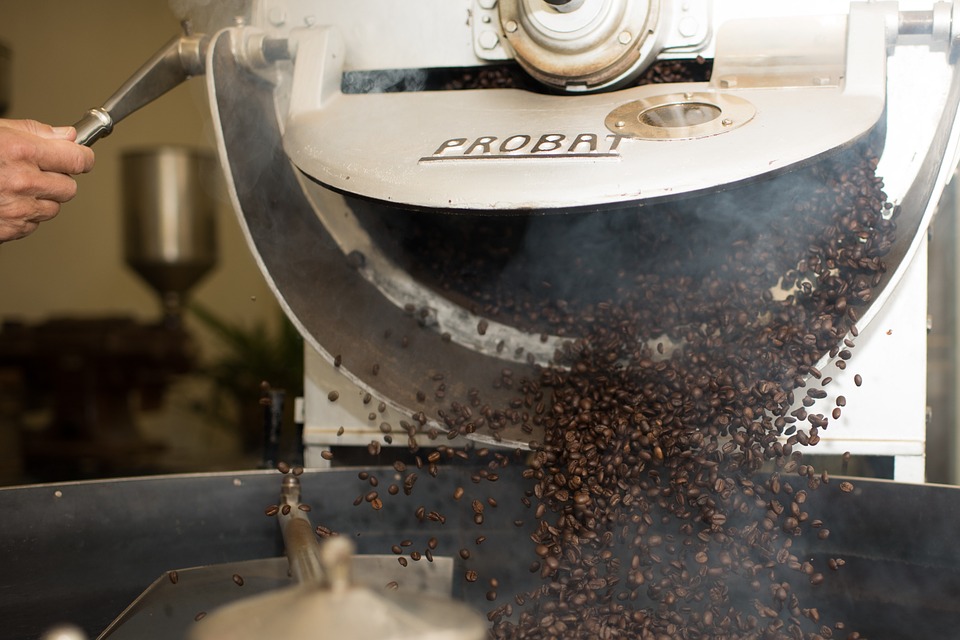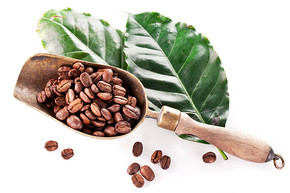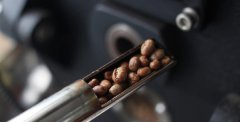Talking about Coffee: fried Coffee Curve and Boat (part I)

For professional baristas, please follow the coffee workshop (Wechat official account cafe_style)
"what is the stage of coffee roasting?" Asked a colleague who had just qualified as a SCAE barista. In addition to working as a bar, a professional barista needs to have a general understanding of the upstream (coffee agriculture) and middle (roasting) in order to introduce the characteristics of local coffee to guests.
Fried beans such as stir-fried 𩠌?
In my spare time, I have explained this problem to onlookers many times when I was doing sample sample roasting in the store: to stir-fry coffee is to heat the green green beans in a rolling iron tube until the beans turn dark brown. Many people misunderstand that "fried beans, such as fried 𩠌", need to dance like a giant spatula like fried chestnuts. In fact, the bean frying machine is electric. In the most commonly used "semi-direct fire" design, the fire burns at the bottom and the iron canister full of coffee beans rotates like a roast chicken. The heat will be dispersed by conduction along the contact surface, or permeated by hot air with convection (convection) in the cylinder. Foreign friends are very professional and will study the effect of the ratio of the two on taste (conductive-convective heat ratio). Using cooking as an analogy, it is probably the difference between dry-fried steak and baked steak at different stages of frying. (note: radiant irradiation is one of the ways of heat transmission, but it is less important than the former two. )
The so-called fried bean stage, to put it simply, is like fried steak "how ripe": visually, the green coffee beans are raw, the light brown ones are half-cooked, and as for black, they are overcooked or even scorched. When you buy coffee beans in the supermarket, the packaging is printed with "medium roast", "full city roast", "French roast" and so on, which are all adjectives of fried beans. However, due to the different standards of different companies, the boutique industry will now use an analyzer called Agtron to quantify colors to facilitate comparison.
The first explosion is undercooked and the second explosion is too hot.
Another way to describe the stir-fried bean stage is to listen to the voice. When making popcorn, the tough outer skin of corn will crack at about 180 degrees Celsius because it can not withstand the pressure caused by internal water evaporation. Fried coffee beans will also explode, and as many as twice. The first first crack is like a burst valley: when water is heated and pressurized, it is caused by breaking the wall of the bean heart. As for the second explosion (second crack), the fiber in the bean is like wood being heated and cracked when burning wood. Its tone is faster and lower than that of the first explosion. When I began to learn coffee, I used to take "before the first explosion of unripe beans and the second explosion of finished beans" as a guide. Up to now, this sentence is still of reference value.
For beginners to stir-fry coffee, you should be used to recording the temperature in the furnace regularly: first preheat the stove to 200 degrees Celsius and then drop the beans, the heat in the furnace will be absorbed by the coffee and the temperature will drop. After about 1 minute, the temperature will bottom at the "temperature recovery point" and gradually rise in the form of parabola. Physically, in addition to darker colors, coffee beans expand in volume, decrease in water content, decrease in density, and lighten in weight. Chemically, coffee beans produce as many as 800 organic compounds through Mena reaction (Maillard Reaction) and caramelization reaction (caramelisation) at different temperatures.
The so-called "roasting curve" is a chart drawn with time and temperature. The environmental factors (indoor temperature and humidity), the temperature of falling beans, the temperature recovery point and the time of the first and second explosion will also be recorded. The baker's job is to rely on experience to control the temperature rise and fall, so as to stir-fry the ideal depth and taste.
Stir-frying coffee and beans is easier said than done. We will continue the next issue.
Patrick Tam (owner of the boutique coffee shop Knockbox, approved barista of the American Fine Coffee Association and European Fine Coffee Association, CQI recognized cup tester, Cup of Excellence's first Hong Kong judge)
Important Notice :
前街咖啡 FrontStreet Coffee has moved to new addredd:
FrontStreet Coffee Address: 315,Donghua East Road,GuangZhou
Tel:020 38364473
- Prev

How to drink coffee healthily?
Follow caf é (Wechat official account vdailycom) found that Beautiful Cafe opened a small shop of its own. Are there any people around you who have a deep obsession with coffee? they should be accompanied by coffee every day! This kind of people are called "they will die if they don't drink coffee". They can't do without coffee. If they don't drink coffee, they will feel uncomfortable all over. Some people like to drink coffee because they hear that coffee has a magical effect! Big
- Next

Talking about Coffee: fried Coffee Curve and Boat (part two)
Professional barista communication Please follow the coffee workshop (Wechat official account cafe_style) do you know the difference between boiling water and stir-fried coffee beans? I use the simplest analogy to inspire colleagues to think. Chemical reactions aside, the physical changes of coffee beans during heating are already quite complex: if the same bean is fried in the same way (that is, the same roasting curve), the taste may not be the same.
Related
- Beginners will see the "Coffee pull flower" guide!
- What is the difference between ice blog purified milk and ordinary milk coffee?
- Why is the Philippines the largest producer of crops in Liberia?
- For coffee extraction, should the fine powder be retained?
- How does extracted espresso fill pressed powder? How much strength does it take to press the powder?
- How to make jasmine cold extract coffee? Is the jasmine + latte good?
- Will this little toy really make the coffee taste better? How does Lily Drip affect coffee extraction?
- Will the action of slapping the filter cup also affect coffee extraction?
- What's the difference between powder-to-water ratio and powder-to-liquid ratio?
- What is the Ethiopian local species? What does it have to do with Heirloom native species?

